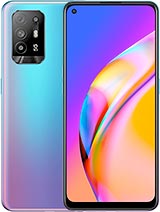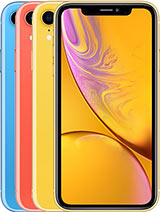Apple's iPhone XR Problem By Apple Explained
Hey guys it’s Greg with Apple Explained. And in this video we’re going to cover some of the trouble Apple’s had with their iPhone XR. Because the company expected it to be one of the best selling iPhone models of all time, but it’s become clear that isn’t the case at all. And Apple has been moving very aggressively to remedy the lack of demand. Now this topic was the first place winner of last week’s voting poll, and if you want to vote for the next video topic, don’t forget to subscribe. That way the polls will show up right in your mobile activity feed and you can let me know which video you’d like to see next.
Now before the iPhone XR and XS was introduced back in September, Apple was enjoying the tremendous success of their iPhone X, which helped catapult the company to a one trillion dollar valuation in August 2018. But there had been many criticisms of the iPhone X, one of the biggest being its high price. Because at one thousand dollars, it was the most expensive iPhone ever sold, and many analysts believed that would hinder sales of the model. But Apple proved them wrong, selling more iPhones in 2017 than the year before. So when it came to the iPhone XS and XR, Apple assumed they had a winning combination on their hands.
Especially since they were offering a budget iPhone that featured an even larger edge to edge display than the X. And it came in colors! So why on earth would the affordable, attractive, feature-filled iPhone XR not sell like hotcakes? Well, there has to be at least one reason, because to Apple’s surprise, the XR didn’t perform as well as they’d expected. And this has contributed to a host of problems for the company. Like falling stock prices, criticism from analysts, and frustration from suppliers. So let’s take this story one step at a time, and figure out why the iPhone XR became one of the only models to fall short of Apple’s expectations.
It all started on October 19th, 2018. The day Apple began taking preorders for the iPhone XR. You see, preorder day for any new iPhone is always highly anticipated, with millions of people across the globe eager to be the first to submit their order on Apples website. Because typically what happens is, within hours, the iPhone’s shipping time begins to slip as all the preorders come pouring in. But that didn’t happen with the iPhone XR.
In fact, it took four days of preorders before there were any shipping delays. And one reason for this is that initial demand for the XR wasn’t nearly as high as Apple hoped. But there could’ve been another reason, maybe Apple intentionally ordered more iPhones than usual in order to prevent shipping delays of as many preorders as possible. And while this may be true, the events that would unfold later on suggest otherwise. Because just a few days after the XR went on sale, Tim Cook moved marketing staff from other projects to work on boosting sales of the new iPhones.
And an internal source called this shift a “fire drill,” which certainly suggests the iPhone XR was selling below Apple’s expectations. And work of the newly assigned marketing team became visible right away. With Apple partnering with The Ellen Show for the first time, giving away a free iPhone XR to every audience member. But when it came to their Black Friday promotion, Apple wasn’t so generous. Only offering gift cards of up to $50 if you bought an older generation Apple device.
But the company obviously felt much more giving when it came to the iPhone XR. Since they offered a discount of up to $300 upon trading in your existing iPhone. And that’s something I want to talk about in more detail. Because although Apple has had an iPhone trade in program for years, they never promoted it as aggressively as with the XR. It’s the first thing listed on Apple’s homepage and it’s even displayed on a sign inside of Apple Stores across the country.
And this is very uncharacteristic of Apple, who usually never runs any sales or promotions on any of their products, and this is especially true when it comes to the iPhone. Because demand for the latest model is usually so high that Apple is able to simply name their price and never lower it until an updated model takes its place. But that isn’t the case this year. The fact that Apple is promoting the iPhone XR at its potential trade-in price of $450 really goes to show how desperate they are to generate interest in the new model. And to top it all off, Apple actually indirectly lowered the price of the iPhone XR in Japan through carrier subsidies.
So Docomo customers will effectively be saving $100 with a 24 month contract. And that’s a move we’ve never seen before from Apple. Now I can’t help but think that if the XR had sold as well as Apple expected, we probably wouldn’t be seeing it on the Ellen Show or promoted at a trade-in price on temporary signs at Apple Stores. But it seems that all the marketing and promoting didn’t have too much of an effect on iPhone sales. Because two months after its release, Apple cancelled a production boost they had scheduled for the iPhone XR.
You see, the company had originally planned on increasing the number of assembly lines for the XR before the holiday season. But they actually did the exact opposite. Decreasing their production lines from 60 to 45. A 25% manufacturing drop right before the holidays, which is definitely saying something. Now I should mention that there were reports claiming the cancellation of the iPhone XR production boost was due to quality issues with its Printed Circuit Board rather than low demand, but this doesn’t explain why Apple decreased assembly lines rather than keeping production steady.
Now the news surrounding the iPhone XR’s lackluster sales really took a toll on Apple’s share price. But this wasn’t the only thing that scared investors. Because on November 1st, Apple announced they’d stop reporting units sales of all their products. Something many experts believed was influenced by disappointing sales of the iPhone XR. And as a result, Apple’s share price experienced a sharp fall at the beginning of November.
And while it’s true that the American economy as a whole began declining around this time, the negative press surrounding Apple only accelerated their trend downward. But the financial burden of slowing iPhone sales extended to companies beyond Apple. Because if you think about it, all of the suppliers who provide the iPhone with different components also suffered the consequences of lower than expected sales. In fact, many display and chip manufacturers complained about their largest client cutting back on orders, and after a second phase of order reductions near the end of November, supplier Largan Precision saw revenues decline, Printed Circuit Board supplier Career Technology reportedly laid off 110 workers to deal with order cuts by Apple, Lumentum Holdings, the main supplier of iPhones Face ID system, anticipated a $70m revenue loss; while screen maker Japan Display also lost revenue and reported lower than expected demand for the new iPhone. But probably the most telling sign of all that Apple jumped the gun with the new iPhone XR is when you consider its inventory health.
Now Tim Cook is known for being one of the best inventory managers in the industry. In fact, he was hired onto Apple back in 1998 because of his experience in “just-in-time” manufacturing, and because of his expertise, Apple has been very good at minimizing the amount of money they have tied up in unsold inventory. Because as you can imagine, it’s not very profitable to have millions of unsold iPhones sitting on apple store shelves across the country. And typically the iPhone has almost always had a healthy sell through rate, with a backlog of about 1 to 2 days of inventory. But supply of the iPhone XR is reportedly already bloated to over three days of inventory.
So it makes sense that Apple is cutting manufacturing for the model since demand is clearly lower than initially estimated. Now I should mention that this isn’t the first time Apple has overestimated the sales potential of a new iPhone model. Because back in 2013 Apple made similar production cuts to their iPhone 5c, and Tim Cook later admitted that they had overstocked the model since the sales ratio between the 5s and 5c was much wider than expected. So when you consider the low number of preorders, production cuts, aggressive promotions, and supplier layoffs, you begin to understand why the iPhone XR has been such a problem for Apple. There simply isn’t as much demand as the company expected and now they’re left to wonder why.
And I think there are a variety of factors at play. First, the iPhone X already sold extremely well just one year ago. And remember, it was a $1,000 device. So I don’t think many of those customers are looking to drop another grand on a new iPhone with virtually zero improvements. And that’s something else to consider, I know many people who bought a used iPhone X rather than a new iPhone XR.
Because you’re getting a higher quality display, camera system, and design at a lower price. So you could argue that the iPhone X was the true budget iPhone of 2018. And while Apple cut production of the iPhone XR, they actually had to increase production of the iPhone 8. Which was likely a more appealing option for customers on a budget buying new, since the 8 starts at just $600, 20% less than the XR. Now that’s not to say the iPhone XR isn’t a good device.
I think it’s the best budget phone Apple has ever made. The problem is that it’s hard to call it a budget phone when it’s priced $100 more than the flagship iPhone 7 released just two years ago. And I think Apple understands this, their problem is that the smartphone market is over saturated and they need to raise prices in order to combat slowing iPhone sales. After all, the iPhone accounts for almost 60% of Apples total revenue, with services coming in second at around 16%. So it’s clear that Apple is trying to keep the average selling price of iPhones up as much as possible, I’m just afraid the days of truly affordable budget iPhones died back in September with the discontinued iPhone SE.
So that is Apples iPhone XR problem, and if you want to vote for the next video topic, don’t forget to subscribe. Thanks for watching and I’ll see you next time.
Source : Apple Explained







![#Samsung News: [Virtual In-store Experience] Galaxy Note20 | 20 Ultra #GalaxyNote20](https://img.youtube.com/vi/PEhn_r2pd1g/maxresdefault.jpg )


















